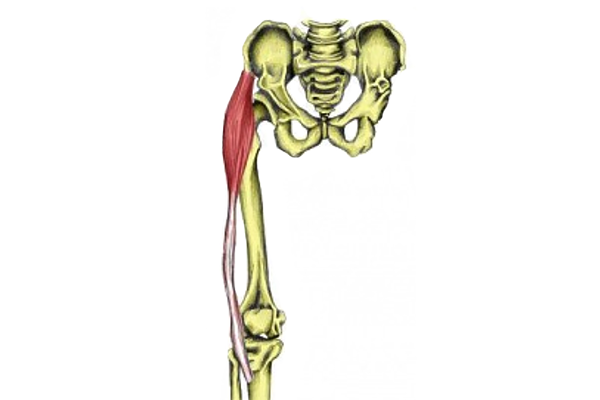
The tensor fasciae latae (TFL) is a relatively small muscle located on the lateral side of the hip. It is named for its action (tensor) and its location (fasciae latae, referring to the fascia of the thigh). Here’s a detailed explanation of the tensor fasciae latae muscle:
Anatomy
- Origin: The TFL originates from the anterior aspect of the iliac crest, which is the upper curved edge of the ilium, one of the pelvic bones.
- Insertion: It inserts into the iliotibial band (IT band), a thick band of connective tissue that runs down the lateral side of the thigh.
- Function: The primary functions of the TFL include:
- Hip Abduction: It assists in moving the thigh away from the midline of the body, known as abduction.
- Hip Flexion: While not its primary function, the TFL can also contribute to flexing the hip joint, particularly when the hip is in a flexed position.
- Medial Rotation: It also aids in inward rotation of the thigh.
Joint actions
The TFL works synergistically with other muscles like the gluteus medius and minimus to stabilize the pelvis during activities such as walking, running, and standing on one leg.
It is particularly active during the initial stance phase of walking and running when it helps to stabilize the pelvis on the weight-bearing side.
The TFL also plays a role in maintaining proper alignment of the lower extremities during various movements.
Clinical Significance
Tightness or dysfunction of the TFL can contribute to issues such as iliotibial band syndrome (ITBS), where irritation or inflammation occurs at the insertion point of the IT band on the knee. This condition is common among runners and cyclists.
Weakness or imbalance in the TFL and other hip abductor muscles can lead to altered biomechanics, potentially increasing the risk of injuries such as patellofemoral pain syndrome or lower back pain.
Overall, while the tensor fasciae latae is a relatively small muscle, it plays an important role in stabilizing the pelvis and contributing to various movements of the hip joint.